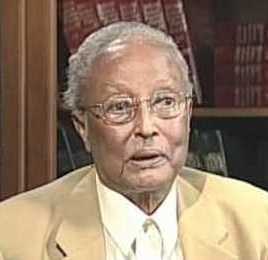Violent Deaths in Darfur: July
According to the incidents reported by the different branches of UNAMID, forty people were killed by violence during the month of July. There are further reports of fatalities in areas controlled by the SLA-Abdel Wahid, as yet not investigated, which may increase the toll. As usual, the figures reported are not official and should not be taken as definitive.
All indications are that July’s pattern of violence is similar to recent months. It is a mixture of criminal and political violence. Fortunately, the inter-tribal fighting among Arab groups in South Darfur remains at a low level, despite the fact that one of the key reconciliation efforts (between Fellata and Habbaniya) has not succeeded.
There has been skirmishing between JEM and Sudan Government forces and also spillover from the Chadian conflict. Three incidents indicate what has been happening.
(1) At the end of June (but only reported in July and so for our purposes included in the July figures), a rebel unit in Hashaba, north-west of Kutum, formerly aligned with SLA-Unity, decided to join JEM. The Sudanese government forces responded with aerial bombing and a ground attack. The number of fatalities is not known. But as the unit was small (forty fighters) and dispersed rapidly in a thinly populated area, it is unlikely that there was a large number of casualties.
(2) Occasional sorties by aircraft in contested areas of north-west Darfur have continued. In Ina village, south-east of Umm Beru, two children were confirmed as having been injured by an Antonov bombardment, which also killed fourteen animals, on 19 July.
(3) A few days earlier, Chadian helicopters crossed the border at Um Dukhn, in the southern part of West Darfur, and fired rockets, presumably intending to target Chadian opposition armed groups. Reports from the local people indicate that there were no casualties.
There is a regular trickle of reports of bandit and criminal attacks including livestock thefts, carjackings, revenge killings, and other homicides that cannot immediately be explained (totaling ten). Unexploded ordnance claimed another life. Five IDPs were killed during the month.
Many of the incidents cannot be easily categorized as either criminal attacks or as armed confrontations between belligerents, but fall somewhere in between.
The largest single incident of violent deaths during the month was fighting between the SLA-Minawi and the SLA-Free Will groups in the vicinity of Korma and Kafod, along the road between al Fashir and Kutum. The main clashes occurred in the last days of June but were reported in July, and indicate seventeen fatalities among civilians and several villages burned, with 6,000 people displaced. There is a recent history of violent clashes between these groups in this area, related to a contest to control the road and its financially lucrative checkpoints, as well as the nearby grazing lands.
Another string of violent incidents involved armed conflict between the army and the SLA-Abdel Wahid in mountainous areas on the north-western flanks of Jebel Marra. Four SLA combatants were confirmed killed but villagers also reported seeing unburied corpses lying in villages. This appears to have been the outcome of a government attempt to suppress SLA attacks on commercial vehicles.
In Nyala, a clash between the army and the Border Intelligence left one soldier and two militiamen dead. This was the outcome of an army operation to suppress a militia unit engaging in illicit trade.
When the UNAMID Joint Mission Analysis Centre produces its definitive figures for July, and combines these with the data for prior months, we should obtain a more complete picture and a better understanding of the patterns and trends.





There are lies, damned lies and statistics (Winston S. Churchill). I don’t know if these statistics are true or not but I can not believe that it is purely a coincidence that the UN has been leaking these numbers at the same time as it is saying that in SOuth Sudan there are much bigger numbers of people being killed in what they misleadingly call inter-tribal fighting. What is behind this business of pushing all the figures down and saying that the numbers were exaggerated all along ?
On any politically charged issue, statistics are sure to be the subject of dispute. This has been especially true for Darfur over the last few years.
I am hopeful that, in the case of Darfur and UNAMID, rigorous data collection and analysis will be able to make the Mission a pioneering case of evidence-based peacekeeping. Conventionally, peacekeeping missions are assessed by logistical and political criteria, rarely by truly objective measures. UNAMID may be in the process of pioneering a new objectivity in terms of measuring its success against benchmarks that are meaningful for the people it is mandated to protect.
I don’t see any conspiracy at work in the comparative figures for Darfur and southern Sudan.
My view on the figures is the following:
(a) I think the current UNAMID figures are broadly accurate. There is some under-reporting but not enough to change the overall picture. The figures are increasing in reliability, month by month.
(b) I see no evidence for widespread elevated mortality in the general population over the last three years. Certainly in pockets there has been distress but there has been no famine. As discussed at some length after UNAMID published its June figures, there is no reliable method for estimating excess mortality in the general population over extended periods of time.
(c) I notice that the ICC figure of 35,000 civilian deaths from violence during 2003-04 is becoming widely cited and accepted. By its own admission, the ICC figure is a conservative one. I strongly suspect that, for violent deaths in those two years, it is an underestimate.
The overall picture did not include reports on violent deaths in the IDP-camps where 20 to 30% of the most affected people are living. Also the ‘disappearances’ and ‘death sentences’ of people arrested for their political motivated activities are not structurally registered, since UNAMID does not include these figures in its benchmarks. The benchmarks itself can be politically motivated.
The fact that the ICC-prosecutor’s figure of 35,000 civilian deaths from violence in 2003-2004 is becoming ‘widely cited’ as Alex de Waal monitors, doesn’t mean that it is ‘widely accepted’ as he states. Only an outcome of the started process of international justice by the ICC, will most probably provide opinion leaders like Alex de Waal with ‘widely accepted facts’.
The new trend that a few experts are starting to use ‘some’ of the arguments of the ICC prosecutor in their favour, while continuing to argue that the ICC-process should be delayed or even obstructed is a contradiction in itself and seems counterproductive towards fact finding and the search for truth in Darfur.
The UNAMID incident reports cover the great majority of the IDP camps in Darfur, including the largest camps such as Kalma (where the camp leaders recently expressed support for UNAMID and endorsement of UNAMID reporting). If there are missing incidents they are far more likely to be from remote rural areas than the IDP camps, where there are day and night patrols and UNAMID-supported community police services. The UNAMID JMAC incident record is filled with reports of robbery, intimidation, and (less often) sexual violence (just seven cases in July, certainly an under-reporting), in the IDP camps, but increasingly few cases of homicide.
The fact that I think the ICC figure for violent deaths in 2003-04 is too low, and that I disagree with the ICC Prosecutor’s political judgment and decision to pursue genocide charges for what has been happening in the IDP camps in the last few years, doesn’t seem to me to be a contradiction at all.
The argument that UNAMID over looks violence in refuge camps is baseless in fact thats were unamid is most active and as far as am aware it is unamid that is responsible for security with in the camps not the sudanese government.
Secondly UNAMIDs figures are only meant to be taken as an indication, ofcourse there are some incidents which go under the radar, but if we were to assume that unamid only recorded only half the incidents that occured in Darfur, the conflict would still be defined a a low intensity conflict.
Baudus even if one was to accept the ICC figures it is hardly contradictory if you disagree with their false conclusion.
The ICC has concluded that 35000 deaths means omar al bashir is responsible for murdering 35000 people just as simple as that, with out takeing on board the many questions you would ask when trying to determine whether war crimes had occured or not such as the involvement of other parties such as rebels and bandits, the proportion of those killed beeing civillians and whether they were caught in crossfire or not, all these questions and much more have been ignored by the ICC when they made their deliberation.
John N.,
Skepticism on UN PKO achievements has become the norm; we are not used to witness them getting visible progress on the ground. Pattern is that in spite of colossal budgets and heavy deployment, little changes.
Yet, in the case of Darfur -and thanks to a wide range of factors, both internal and external-, UNAMID is being instrumental in reducing the level of violence. Not that the UN should claim any success at this point in time, so much remains to be done in Darfur.
But the core mandate of UNAMID is to assure protection of civilians, ensure humanitarian access. Much effort is being put in, resulting in diminished lethal violence. This is what is should be. This is part of what UNAMID has been deployed for. Nothing political in that.